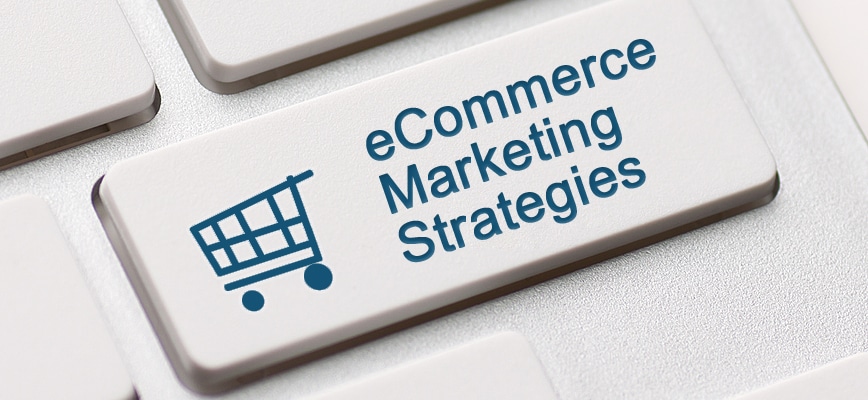Many businesses use traditional marketing to promote their products and raise brand awareness. Billboards, handouts, cold calling, and broadcasting are examples of offline promotional strategies. Learning more about traditional marketing can assist a company in differentiating its commercials from competitors and connecting with diverse audiences. In this post, we will define traditional marketing and its significance, compare digital marketing vs content marketing, including its method and channel, benefits and downsides, and evaluate tips for implementing traditional marketing.
What is Traditional Marketing?
Traditional marketing encompasses all marketing approaches that predate what is now known as digital marketing. Traditional marketing is any type of marketing that reaches an audience through offline media. Newspaper ads and other print advertisements are basic examples of traditional marketing, but there are also billboards, postal advertisements, and TV and radio adverts.
The advertising boom of the 1950s was primarily responsible for what we now call traditional marketing. This surge in marketing popularity occurred as a result of television’s tremendous popularity in the 1950s. Until now, consumers had to read a newspaper, or magazine, or look at a billboard to see advertisements. Although radio advertising existed, it could not reach the same type of audience. Advertisers could reach a vast audience in the comfort of their own homes with television, altering the way firms used advertising.
While digital marketing has become a significant part of most organizations’ marketing strategies, direct mail and other kinds of traditional marketing still have a place. Understanding which marketing channels are best for your company is crucial to making the most of your marketing budget.
Why is Traditional Marketing Important?
Traditional marketing is crucial because it targets consumers that do not spend their time on computers or smartphones. It can also reach a larger audience if you position your adverts in public places where many people go. Building brand awareness and attracting more potential clients can be accomplished by placing billboards or bus adverts throughout the neighborhood. Also, Traditional marketing initiatives such as television and radio commercials, print materials, or newspaper ads can connect you with a local audience and make you more visible to members of the community if one of your aims is to appeal to a local audience.
Traditional Marketing Method
Traditional marketing is not extinct in the digital world. Today, cold calling is still a popular approach to generating leads and cash. Even as the digital revolution continues, traditional marketing is far from dead, and related firms are thriving. Traditional marketing methods remain a powerful secret weapon for interactive, face-to-face, and expert marketing.
The following are examples of a traditional marketing method and channel:
#1. Handouts
A handout is a printed material, such as a flyer or brochure, that promotes a company, event, or sale. You can use these flyers to inform neighborhood members about promotional activities taking place at your institution in public areas that they frequent. Brochures, which can be distributed at events or when visiting clients, can provide information about a firm or describe the advantages of a product. Potential buyers can carry these handouts with them or save them for later use when they wish to learn more about a company or product.
#2. Billboards
Billboards are often found along highways or major roadways. They show commercials as well as company graphics. Billboards often include visuals with supporting text that communicate a brief yet memorable message to drivers. Creative billboard advertising can help your audience recognize and remember your brand. Billboards frequently reach a large number of people from diverse areas, which can be advantageous if your goal is to gain local or national brand recognition.
#3. Direct mail
Direct mail marketing involves mailing print items such as letters or postcards to the addresses of potential clients in your target location. also, Direct mail can be sent to people who have demonstrated an interest in the firm or its products. Another alternative is to send direct mail products to people in the community who reside near the business. These direct mail materials raise brand awareness and let customers realize how close the firm is to their house.
#4. Print advertisements
Print adverts allow you to reach a larger number of potential clients through channels such as newspapers or magazines. If you want to raise community awareness, displaying adverts in newspapers can assist others discover more about the business, its location, and its products. Consider establishing which periodicals or reading materials your target demographic reads and placing your advertisements in these publications to generate more sales leads.
#5. Promotional event marketing
You can use event marketing to design advertising materials to display at industry events such as seminars, conventions, or conferences. To attract people and tell them about the company and its products, consider developing booths and larger materials such as signs or banners. Set up comparable booths at other local events, such as fairs or festivals, to acquire local notice. You can also participate in sponsorships to boost the recognition and awareness of your business.
#6. Broadcasting
Making radio and television advertising is another approach to obtaining local or national notoriety. You may create and sell unique advertisements that educate customers about your business and products. Hearing or seeing these broadcast commercials may pique the interest of listeners and viewers, prompting them to explore the firm or contact you for additional information.
#7. Cold calling
This sort of marketing, often known as telemarketing, is used by businesses that sell their products or services over the phone. Cold calling can be used by both business-to-business (B2B) and business-to-consumer (B2C) firms. Using a cold-calling technique lets you interact with potential consumers and explain the product you’re offering and how it can address any problems they or their company are experiencing. This method enables you to generate a personal connection and trust between your organization and prospective clients.
#8. Product placement
Product placement is a type of advertising in which a corporation prominently promotes its product or brand in the setting of a television show, film, or other form of media. The idea is to build a subliminal link between the product and the entertainment content so that viewers are more likely to buy the product. Product replacement is also known as embedded marketing, brand integration, or branded entertainment by certain marketers.
Tips for Implementing Traditional Marketing Channel
Here are some traditional marketing tips:
- Establish your budget: Knowing your spending constraints at the start of a marketing campaign will assist you choose which tactics are available. If a TV ad on a major network is out of reach, a direct mail campaign may be more feasible.
- Select your message: In a marketing campaign, consistency is critical because tone, language, color, and pictures all try to persuade various clients in the same way. Consider creating a campaign-style guide to guarantee that each ad in the campaign has consistent messaging and purpose.
- Identify potential partners: If you plan to advertise on TV, radio, or in a newspaper or magazine, think about which stations or publications you might be able to collaborate with. You can contact these organizations to enquire about acquiring ad space and to explore how their audiences can benefit from hearing about your product or service.
- Hire more people: Some traditional marketing initiatives may necessitate the hiring of experts such as copywriters, graphic designers, or videographers. If your marketing team lacks these resources, consider partnering with freelancers or an agency service to meet your marketing objectives on time and within budget.
Content Marketing vs Traditional Marketing
Content marketing is a lengthier, more deliberate approach, whereas traditional marketing is more about audience targeting and immediately reaching a larger prospective client base, even if they haven’t specifically requested to see your marketing.
One purpose of content marketing is to obtain your customer’s email address through an opt-in. The prospect is now on your email marketing list after a brand confirms this sign-up. This enables you to send out more direct marketing and promotional materials, as well as brand awareness initiatives and other instructional materials.
When a consumer decides to opt-in, they’ve granted you permission to send them more information, but you must be cautious because this is the first step in creating trust with your customer. If you want to nurture them, send personalized email content and guide them farther down your sales funnel.
Content marketing is a long-term, SEO-driven approach for converting visitors and prospects into loyal consumers. Traditional marketing, on the other hand, has a considerably shorter life cycle, frequently consisting of a single effort to advertise products or services to a specific target group. To be successful with a content strategy, content must be valuable, intriguing, and useful.
To summarize, content marketing vs traditional marketing are completely different creatures. Content marketing is all about providing excellent content that attracts and engages your target audience, whereas traditional marketing is more concerned with disseminating a message to as many people as possible via digital media.
Digital Marketing vs Traditional Marketing
Traditional marketing vs digital marketing is two techniques for promoting a product, service, or brand. Let us examine the distinctions between the two:
- Channels: Traditional marketing promotes products or services through traditional media channels such as TV, radio, print publications, and billboards, whereas digital marketing promotes products or services through digital channels such as email, social media, search engines, and mobile apps.
- Targeting: Because digital marketing can use data and analytics to segment consumers and deliver customized messaging and content, it enables more focused marketing efforts. Traditional marketing, on the other hand, is more broad and mass-market-oriented.
- Cost: Digital marketing is frequently less expensive than traditional marketing because it has a lower cost per impression or click and is easier to track and optimize for ROI.
- Engagement: Through methods like social media interaction, email marketing, and influencer marketing, digital marketing allows for more direct and interactive contact with audiences. Traditional marketing is more one-sided and less participatory.
- Reach: Traditional marketing has the potential to reach a huge number of people through mass media channels. Digital marketing can have a broad reach, but it can also be extremely targeted, reaching out to specific niche demographics with pinpoint accuracy.
Overall, depending on the business goals, target audience, and budget, both digital marketing vsctraditional marketing can be effective techniques for promoting a product, service, or brand. Many organizations nowadays utilize a mix of digital vs traditional marketing methods to reach their target consumers and achieve their marketing goals.
The Benefits and Drawbacks of a Traditional Marketing Method
In the following sections, we’ll discuss some of the advantages and disadvantages of a traditional marketing channel and method in comparison to digital marketing. If you’re having difficulties deciding what form of marketing is best for your company, we’ll provide some guidance below.
Traditional Marketing Benefits
The following are some of the benefits of employing traditional marketing methods:
- Increased audience size: Media such as television, radio, and billboards can reach consumers in new markets and geographical areas. Flyers, direct mail, and print ads can also be used to engage consumers in a specific geographic area.
- Reusable materials: Businesses can frequently reuse the same flyers, TV ads, or radio ads, such as an advertisement that plays every year during a specific holiday season. They can save time and money while still advertising the business this way.
- Credibility: Consumers link traditional marketing with higher firm budgets, indicating a brand’s longevity, possibility for expansion, and financial stability. Customers may be more willing to buy from organizations that they associate with these characteristics.
- Brand exposure: A multimedia traditional marketing campaign is an excellent way to promote consumer brand recall and familiarity with the company’s mission, values, and products.
Traditional Marketing Drawbacks
Traditional marketing may have disadvantages despite its benefits. Being aware of the following disadvantages may assist you in anticipating and addressing any issues:
- Cost: While certain traditional marketing strategies can save money, paying for ad space and printing ad materials can be expensive. Consideration of which demographics are more likely to respond to different sorts of traditional marketing can lead to a more strategic and cost-effective marketing method.
- Difficult to understand KPIs: Key performance indicators (KPIs) are measures used by marketers to assess audience engagement with an advertising campaign. Because traditional marketing can not provide quick insights into consumer behavior, marketing teams might construct additional metrics to measure effectiveness, such as the number of new customers gained or products sold since the campaign’s inception.
- Less segmentation: Because traditional marketers can’t target their ads precisely, they may benefit from focusing their efforts on raising broad awareness of the company’s beliefs and products.
Why Traditional Marketing Is the Best?
While traditional marketing can still be effective for some businesses, it is not necessarily “the best” approach for all. The effectiveness of traditional marketing depends on several factors, including the target audience, the product or service being promoted, and the available budget.
Here are some potential advantages of traditional marketing:
- Wide reach
- Tangibility
- Familiarity
- Branding
What Is the Purpose of Traditional Marketing?
The purpose of traditional marketing is to promote a product, service, or brand through traditional media channels such as television, radio, print publications, billboards, and direct mail. The primary goal of traditional marketing is to reach a large and diverse audience and persuade them to buy a product or service, or to build brand awareness and loyalty.
What Are the 3 Traditional Marketing Approaches?
There are several traditional marketing approaches, but here are three of the most common:
- Outbound marketing
- Direct marketing
- Event marketing
What Are 5 Examples of Traditional Marketing?
Here are five examples of traditional promotion:
- Print Advertising
- Broadcast Advertising
- Outdoor Advertising
- Direct Mail
- Event Marketing
Is Traditional Marketing Still Effective?
Yes. Traditional marketing can still be effective for some businesses, depending on the target audience, the product or service being promoted, and the available budget. However, the effectiveness of traditional marketing has been declining in recent years, as consumer behavior and media consumption habits have changed.
What Are the Advantages of Traditional Media?
Traditional media, such as television, radio, newspapers, and magazines, have some advantages that can make them effective for certain market purposes. Here are a few advantages of traditional media:
- Wide Reach
- Tangibility
- Credibility
- Targeting
- Familiarity
Conclusion
Traditional marketing is an essential component of the marketing mix. According to the Print In the Mix survey, 56% of respondents indicated they trusted printed content the most. 70% of Americans prefer to read printed paper over a computer screen, with 67% preferring the tactile feel of print media. The key to a successful marketing plan is balancing traditional and digital marketing platforms. Both are critical components of a marketing strategy, but they work better together.
- What Is A Billboard, and How Much Will It Cost In 2023?
- BILLBOARD ADVERTISING: What It Is and Everything You Should Know
- ADVERTISING vs MARKETING: What is the Difference?
- IT TECHNOLOGY: Definition and Benefits
- CREATOR ECONOMY: What Is It & How Does It Work?






